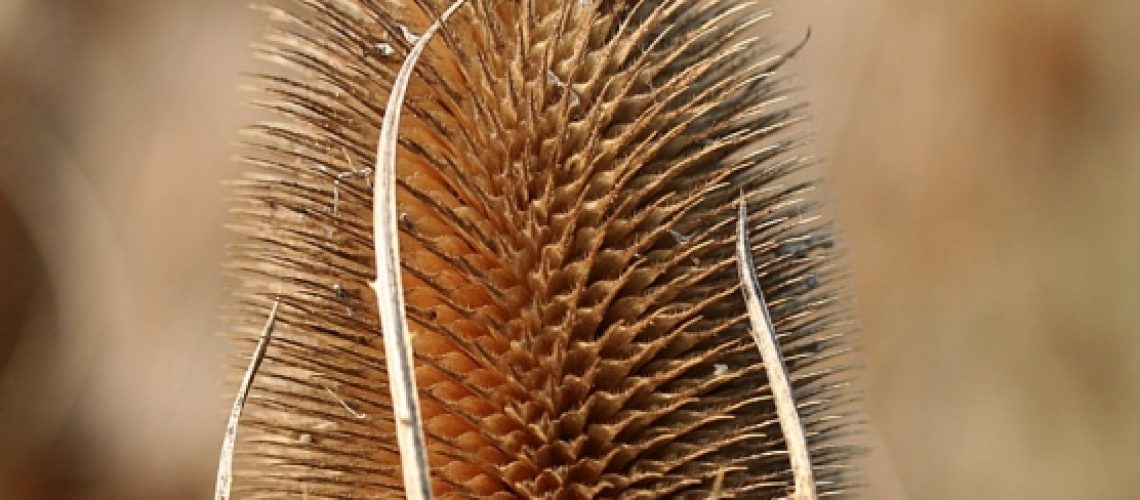Another invasive species in the Granite Creek Watershed, and mostly in Watson Woods Riparian Preserve, is common teasel. Often used in flower arrangements, this attractive piece, has found its way into our creeks and is taking over sections of our riparian habitat.
According to Wikipedia:
The genus name is derived from the word for thirst and refers to the cup-like formation made where sessile leaves merge at the stem. Rain water can collect in this receptacle; this may perform the function of preventing sap-sucking insects, such as aphids, from climbing the stem. A recent experiment has shown that adding dead insects to these cups increases the seed set of teasels (but not their height), implying partial carnivory. The leaf shape is lanceolate, 20–40 centimeters (7.9–15.7 in) long and 3–6 centimeters (1.2–2.4 in) broad, with a row of small spines on the underside of the midrib.
Teasels are easily identified with their prickly stem and leaves and the inflorescence of purple, dark pink, or lavender flowers that form a head on the end of the stem(s). The inflorescence is ovoid, 4–10 centimeters (1.6–3.9 in) long and 3–5 centimeters (1.2–2.0 in) broad, with a basal whorl of spiny bracts. The first flowers begin opening in a belt around the middle of the spherical or oval flowerhead and then open sequentially toward the top and bottom, forming two narrow belts as the flowering progresses. The dried head persists afterwards, with the small (4–6 millimeters (0.16–0.24 in)) seeds maturing in mid autumn.
The Fuller’s Teasel (the cultivar group Dipsacus fullonum Sativus Group; syn. D. sativus) was formerly widely used in textile processing, providing a natural comb for cleaning, aligning, and raising the nap on fabrics, particularly wool. It differs from the wild type in having stouter, somewhat recurved spines on the seed heads. The dried flower heads were attached to spindles, wheels, or cylinders, sometimes called teasel frames, to raise the nap on fabrics (that is, to tease the fibers). By the 20th century, teasels were largely replaced by metal cards, which could be made uniform and do not require constant replacement as the teasel heads wear. However, some people who weave wool still prefer to use teasels for raising the nap, claiming that the result is better; in particular, if a teasel meets serious resistance in the fabric, it will break, whereas a metal tool would rip the cloth.
Teasels are also occasionally grown as ornamental plants, and the dried heads are used in floristry.

